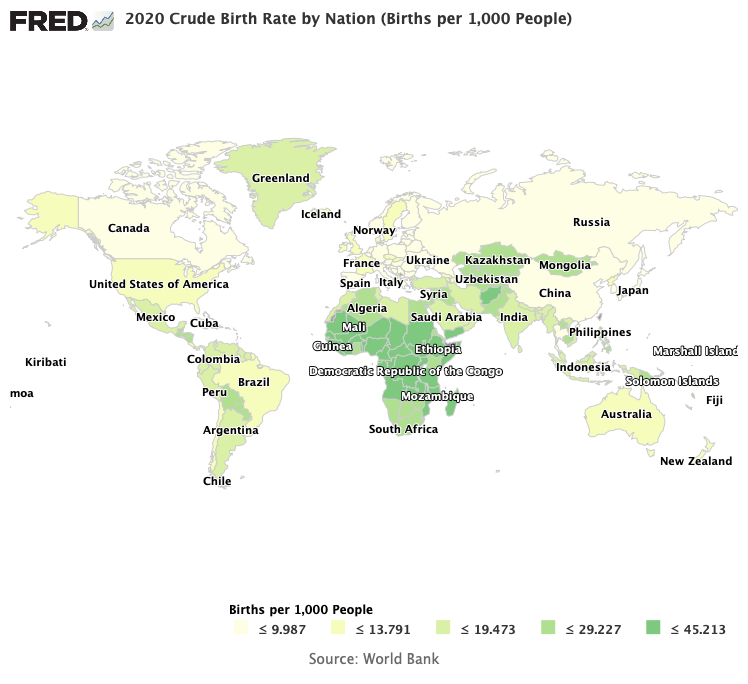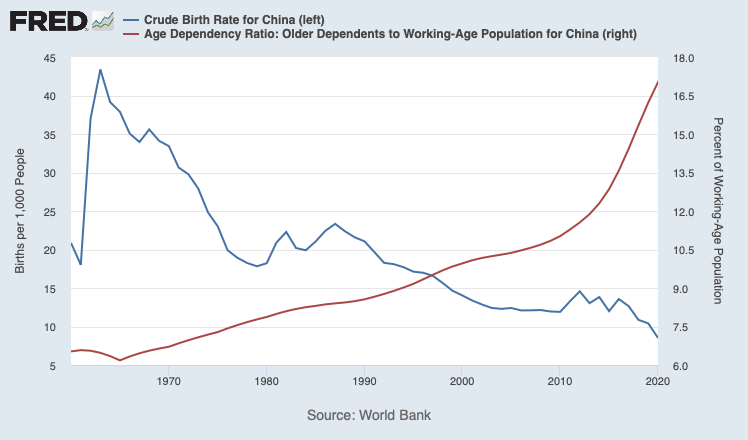Why Economists Study Demographic Change
When people hear the term “economics” or “economic research,” they might think about money, interest rates or the stock market. Economic research does study topics such as these, but is not limited to them.
To understand why, review the definition of economics: a social science that studies scarcity and the choices surrounding the production, distribution and consumption of goods and services. Using this definition, any behavior or policy that influences those actions is of interest to economists.
Therefore, economists study demographic change. Demography is the statistical study of populations, which highlights the changing structure of the human population. To illustrate, consider the age distribution of the population, and how it can affect the economy: An increase in the retired-age population, for example, will affect Social Security, pensions and savings decisions.
Multiple Measures of Population Change
Economists use several measures of population change to study questions surrounding that issue, such as population change across countries or within one country. For instance, economists study how the baby boom in the U.S. and the economy interacted.
To study these changes, economists use many statistics. To name a few:
- Crude birth rate (CBR): the number of births per 1,000 people
- Crude death rate (CDR): the number of deaths per 1,000 people
- Life expectancy (LE): the average number of years a person is expected to live given a certain age
- Rate of net migration: the number of immigrants minus the number of emigrants
The map below, from online database FRED, shows the crude birth rate worldwide.

These statistics allow for different aspects of demographic change to be studied. CBR measures fertility, whereas CDR and LE both measure mortality. Since CDR and LE are measures of mortality, one might question why there is a need for both. The answer: The two measures look at different aspects of mortality. Because of the way it is defined and measured, LE reflects age-specific mortality rates, whereas CDR doesn’t. Therefore, LE provides different information from CDR.
Combining Measures for Additional Insights
Economists can combine the different statistics to get different information. For example, using CBR and CDR, it is possible to see how the world population changes. Changes in the world population are determined by the rate of natural increase, which is calculated by subtracting CDR from CBR. If CBR is bigger than CDR, the world population is growing; if CBR is smaller, the world population is shrinking.
However, one must include net migration to calculate the rate of population change for a specific country. A specific country’s rate of population change is equivalent to the rate of natural increase plus the rate of net migration of that country. If a country’s rate of net migration is large enough, the country’s population can still grow even if CDR is bigger than CBR.
Relationship between Demography and the Economy
To better understand why economists study demographic change, it is important to understand how demographic change affects the economy, and how economic decisions impact demography. Some economic and demographic factors that are influenced by the other are the size of the labor force, economic growth, and the decision to have children. How each of these shows that interaction of the two is as follows:
- Labor force: When the population grows, so will the labor force. More people searching for jobs means that companies might grow and new ones might form to accommodate the additional workers. On the other hand, when the population shrinks, the labor force will generally contract. When the labor force contracts, some available positions will not be filled, and companies might become smaller or leave the market altogether.
- Economic growth: Demographic change can affect economic growth in several ways: first, through the labor force effect mentioned above. If the labor force shrinks, the economy might also shrink. If the labor force grows, then so might the economy. Another way for demographics to affect the economy is through consumer spending, which is reflective of how many people there are. If there are more people, consumer spending will increase, and vice versa.
- Decision to have children: Families consider different factors when deciding to have children, such as income. The more income a family has, the more it can afford to have a child. However, if the prices of goods are going up or someone is unable to find a job, this might disincentivize having a child.
We can see through these different aspects that the economy can be affected by demographic change, and vice versa.
China’s One-Child Policy Shows Demographics’ Role
A real-world example can illustrate how demographic change and the economy interact. China had a one-child policy (a government policy that limited families to having one child with consequences in place for noncompliance) for about 35 years beginning around 1980, because leaders were worried that population growth (which could lead to an overpopulated country) would negatively affect the economy and people’s standard of living.
However, in 2016, China switched to a two-child policy because leaders were concerned about the aging population and the eventual decline in the labor force and number of consumers. Allowing families to have two children would increase the number of workers in the future, as well as the current spending of the parents. (In July 2021, China lifted all consequences for having more children than allowed under family planning laws.)
The FRED graph below shows the trends in China’s crude birth rate (left axis) and the country’s ratio of older dependents to the working-age population (right axis) during and after the time the one-child policy was in effect. Working-age people are defined as those aged 15 to 64, and older dependents are those over 64. While this graph does not show the effect of the one-child policy alone, it helps illustrate why China is concerned about the makeup of their population.

Through the economic factors that influenced China’s decisions surrounding the one-child policy, we can see that the interaction between economics and demographic change goes past theory into the real world. While this is one example, other examples are found throughout different countries.
Economists strive to understand demographic change because, by doing so, they can better understand different forces that affect the economy. Economists choose to study many different topics, and those topics span more than just the stock market or interest rates. Economics is unique in that many topics and questions will have an economic interpretation.
This blog explains everyday economics and the Fed, while also spotlighting St. Louis Fed people and programs. Views expressed are not necessarily those of the St. Louis Fed or Federal Reserve System.
Email Us


